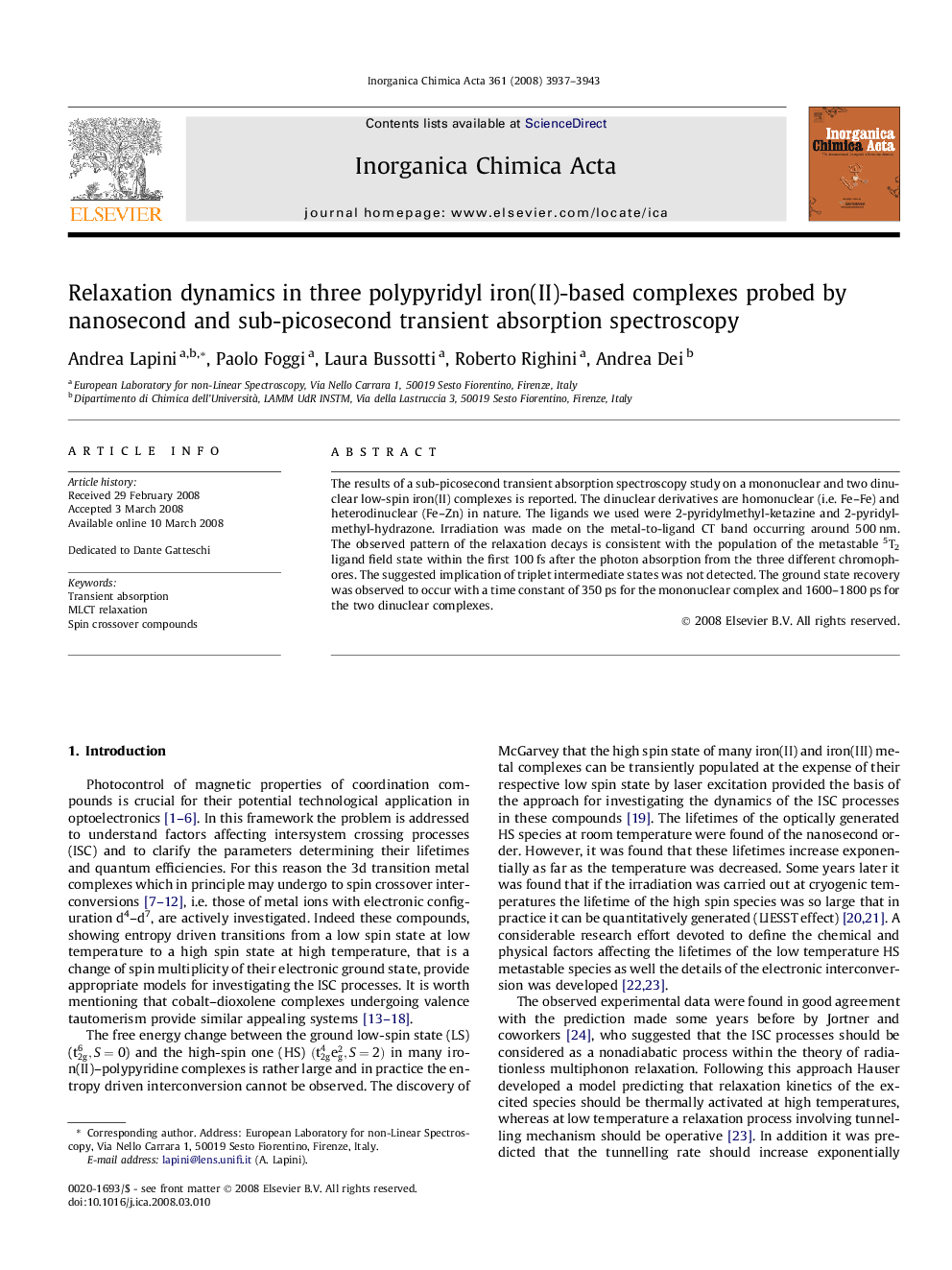| Article ID | Journal | Published Year | Pages | File Type |
|---|---|---|---|---|
| 1311466 | Inorganica Chimica Acta | 2008 | 7 Pages |
The results of a sub-picosecond transient absorption spectroscopy study on a mononuclear and two dinuclear low-spin iron(II) complexes is reported. The dinuclear derivatives are homonuclear (i.e. Fe–Fe) and heterodinuclear (Fe–Zn) in nature. The ligands we used were 2-pyridylmethyl-ketazine and 2-pyridylmethyl-hydrazone. Irradiation was made on the metal-to-ligand CT band occurring around 500 nm. The observed pattern of the relaxation decays is consistent with the population of the metastable 5T2 ligand field state within the first 100 fs after the photon absorption from the three different chromophores. The suggested implication of triplet intermediate states was not detected. The ground state recovery was observed to occur with a time constant of 350 ps for the mononuclear complex and 1600–1800 ps for the two dinuclear complexes.
Graphical abstractTransient absorption spectroscopy on femtosecond time scale has been used to study the relaxation dynamics in [Fe(PMH)3]2+, [Fe2(PMK)3]4+ and [FeZn(PMK)3]4+ complexes, in order to characterize the nature of the lowest and long living excited state.Figure optionsDownload full-size imageDownload as PowerPoint slide
